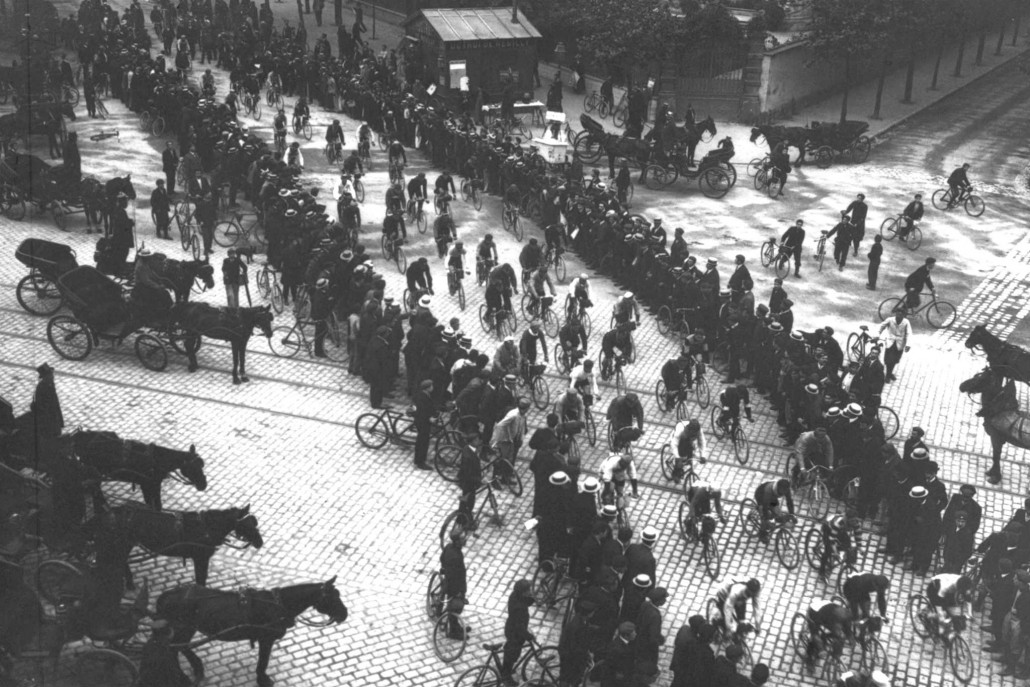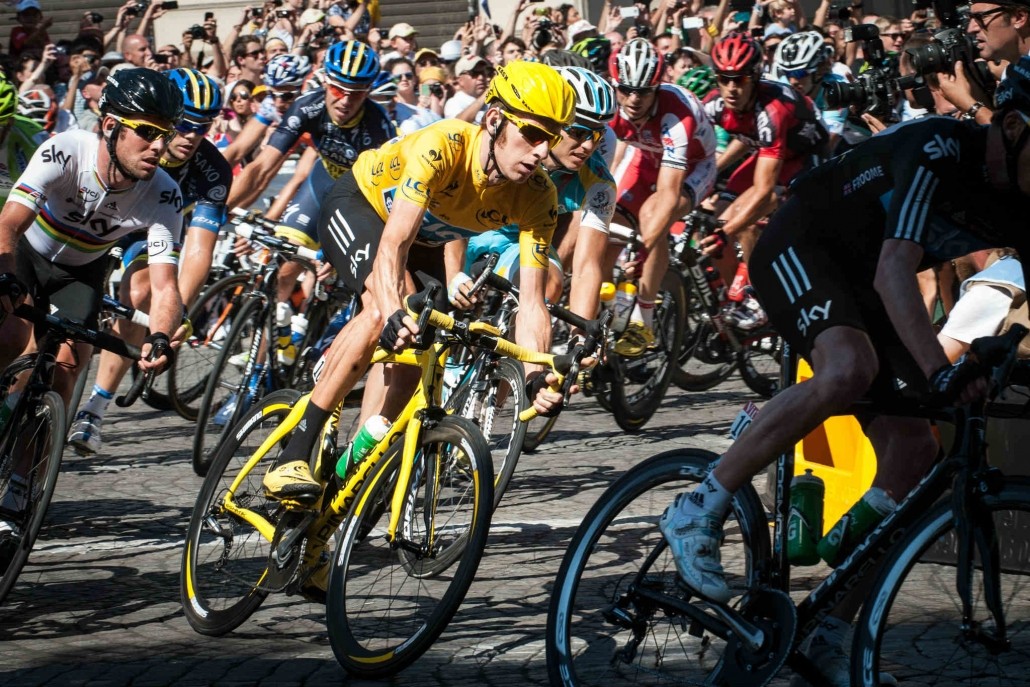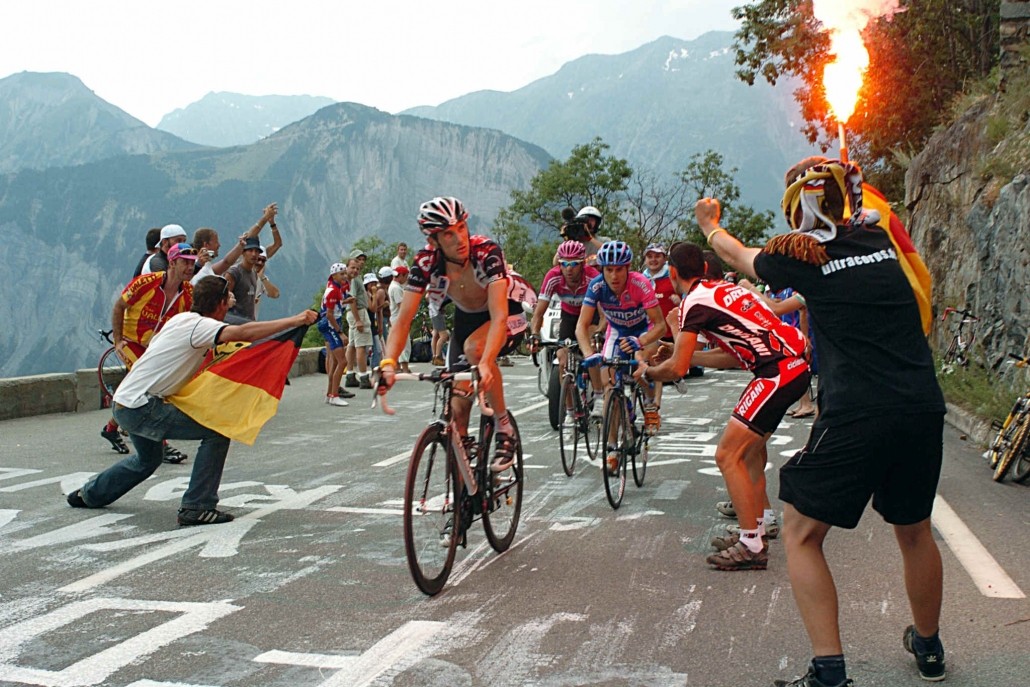This July, the legendary Tour de France once again rolls into action. Held annually, this multiple stage bicycle race winds its way across the nation (and occasionally into neighboring countries), taking in all types of terrain along the way. Read on to learn more about this iconic event.
Over a Century of Competition
The 2017 Tour De France will be the 104th edition of the race. Aside from breaks during the two World Wars, it has been held every year since the inaugural event in 1903. As the Tour gained prominence and popularity the race was lengthened further, and coverage began to extend around the globe. Initially most of the riders came from France. However as news of the contest spread, it was soon attracting participants from all over the world.
The Tour de France is the oldest and most prestigious of cycling’s big three events (the other two being the Giro d’Italia and Vuelta a España). Traditionally, the race is held in the month of July. While the route sees slight changes each year, the format stays the same. Individual and team time trials, dramatic passages through the mountains of the Pyrenees and the Alps, and the climatic finish on the Champs-Élysées in Paris are constant fixtures, all of which have contributed to the tour’s status as the most famous cycling event in the world.

This historic image from 1906 shows cyclists competing in one of the earliest editions of the Tour De France.
Tour De France Race Format
Modern editions of the Tour de France consist of 21 day-long stages held over a 23-day period. The entire route covers around 3,500 kilometres (2,200 miles). Each year, the race alternates between clockwise and counterclockwise circuits of the country.
The number of teams competing usually varies between 20 and 22, with nine riders making up each team. Each stage is timed to the finish, and the riders’ times are aggregated with their previous stage times. The rider with the lowest overall time is the leader of the race, and gets to don the coveted yellow jersey. While this is the title which garners the most attention, there are several other contests held within the Tour. These include the points classification for sprinters, the mountain classification for climbers, the young rider classification for competitors under the age of 26, and the team classification for the fastest teams. Stage wins are also hotly contested, and fought for by a specialist sprinter on each team.

Britain’s Bradley Wiggins sports the coveted yellow jersey at the 2012 Tour De France.
2017 Tour De France
This year, the Tour De France kicks off in Düsseldorf, Germany. Stage One takes the form of individual time trials. The following day, the riders head to Liége in Belgium, crossing over 200km in the first flat section of the epic course. The Tour then moves on through Luxembourg, arriving in France at Vittel and then winding south through the country, taking in many scenic locations along the way.

Several stages of the Tour De France include steep uphill climbs in the scenic mountainous regions of the Alps and the Pyrenees.
Below is a day-by-day breakdown of the route for this grueling event. With riders covering upwards of 200km per day over three weeks, the Tour De France is considered the ultimate challenge of fitness and ability for cyclists.
| Date | City | Distance | Format |
| Saturday 1 July | ITT in Düsseldorf (Germany) | 13.0 km | Individual time trials |
| Sunday 2 July | Düsseldorf (Germany) – Liége/Luik (Belgium) | 202.0 km | Flat |
| Monday 3 July | Verviers (Belgium) – Longwy | 212.5 km | Finish uphill |
| Tuesday 4 July | Mondorf les Bains (Luxembourg) – Vittel | 207.5 km | Flat |
| Wednesday 5 July | Vittel – La Planche des Belles Filles | 160.0 km | Mountain finish |
| Thursday 6 July | Vesoul – Troyes | 216.0 km | Flat |
| Friday 7 July | Troyes – Nuits Saint Georges | 214.0 km | |
| Saturday 8 July | Dole – Station des Rousses | 187.0 km | Mountains |
| Sunday 9 July | Nantua – Chambéry | 181.0 km | Mountains |
| Monday 10 July | Rest day in Dordogne | ||
| Tuesday 11 July | Périgueux – Bergerac | 178.0 km | |
| Wednesday 12 July | Eymet – Pau | 202.0 km | |
| Thursday 13 July | Pau – Peyragudes | 214.0 km | Mountains |
| Friday 14 July | Saint Girons – Foix | 100.0 km | Mountains |
| Saturday 15 July | Blagnac – Rodez | 181.0 km | |
| Sunday 16 July | Laissac Sévérac l’Église – Le Puy en Velay | 189.0 km | Hilly |
| Monday 17 July | Rest day in Le Puy en Velay | ||
| Tuesday 18 July | Le Puy en Velay – Romans sur Isère | 165.0 km | |
| Wednesday 19 July | La Mure – Serre Chevalier | 183.0 km | Mountains |
| Thursday 20 July | Briançon – Col d’Izoard | 178.0 km | Mountains |
| Friday 21 July | Embrun – Salon de Provence | 220.0 km | Flat |
| Saturday 22 July | ITT in Marseille | 23.0 km | Individual time trials |
| Sunday 23 July | Montgeron – Paris | 105.0 km | Flat |
Britain’s Chris Froome returns this year as defending champion, and will be looking to add a fourth title to his record. Victory would mean him emerging triumphant for three successive years, ensuring his legacy as the most successful competitor in more than 20 years.
Whoever takes the famous yellow jersey, cycling fanatics are guaranteed an enthralling three weeks of sport. The Tour De France takes place from 1 – 23 July, 2017. For further details on the build-up to the event, please visit the official website.
Jetex in France
Anyone wishing to arrange their own “Tour De France” by private jet can easily do so, thanks to our extensive network of facilities throughout the country. Jetex operates FBOs in a total of 17 locations around France.
These include Angoulême, Annecy Mont Blanc, Auxerre, Bourges, Châlon, Cherbourg, Dijon Bourgogne, Le Havre, Marseille, Nimes Camargue Cévennes, Paris, Reims, Tarbes Lourdes Pyrénées, Toulouse Francazal, Tours Vale de Loire, Troyes, and Vannes Golfe du Morbihan.
At each FBO you will find the full range of Jetex services, including comfortable VIP passenger and crew lounges, ground handling, fueling, international trip planning and an exclusive array of bespoke concierge services.
Start organizing your trip to France today! Contact our team on +33 117 437 2522 or france@jetex.com.



